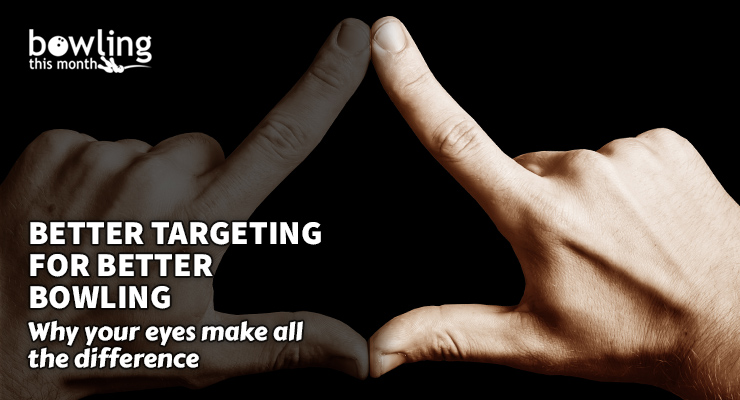Article Contents
- 1. Proper use of the eyes
- 1.1. Understanding eye dominance
- 1.2. Skewing perspective
- 2. Targeting tools
- 3. The consequences of poorly visualizing the lane
- 4. Targeting’s impact on the approach
- 5. Targeting equation
- 6. Targeting distance
- 7. Conclusion
Note: This article is only available to Bowling This Month subscribers.
In this article, we will delve into the importance of an athlete’s vision and explore whether they use it properly or otherwise. As a bowler progresses, it becomes more and more important how they “see” the lane and use targeting. I have been spending more time in my lessons working with my students on how to properly use their eyes to succeed, or to better understand why they may fail or struggle simply because they are looking at the lane incorrectly.
One area that is rarely spoken about is the impact of the eyes on ball reaction and creating it properly and effectively. As a reference, a bowling lane is about 40 inches wide and 60 feet long, so there is only so much room for true reaction. Ball motion needs to be created within these confines and the applied condition. Many times, this is not taken into consideration, resulting in improper choices made by the bowler.
Proper use of the eyes
How vital is it for an athlete to properly understand how they visualize a target?
I have started focusing more with my students on eye dominance in association with targeting, lane play, and their effect on the overall comprehension of ball motion and potential success. The athlete must see the playing field properly to attack and conquer it successfully and consistently. This is also important when attempting to create a ball motion or reaction properly and effectively.
Understanding eye dominance
My first step is to discover whether the athlete is aware of their individual eye dominance. Are you right-eye dominant or left-eye dominant? This tells how you perceive and truly see the target.
How does a bowler identify which eye is the dominant one? The easiest way is to start by making a triangle out of your two hands, using ...
Already a premium member? Click here to log in.


 (Only
(Only 